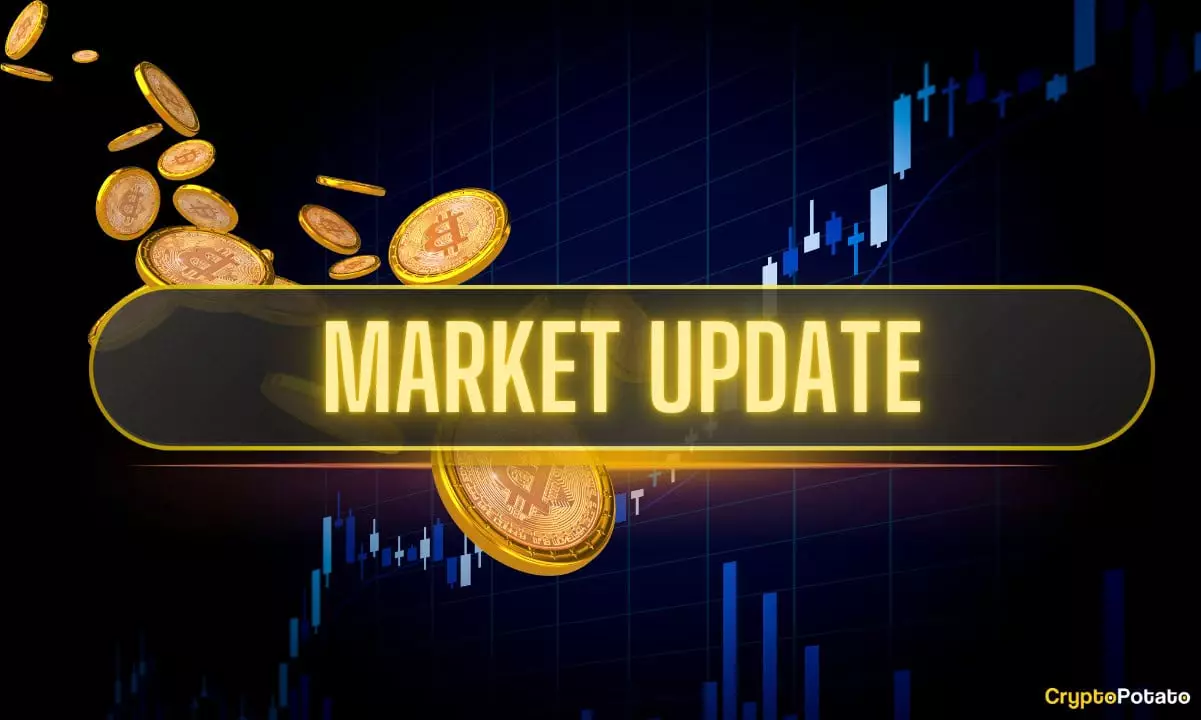The economic landscape has become increasingly complicated, particularly as the United States continues its aggressive trade policies led by ex-President Donald Trump. What began as a strategic maneuver in the trade war has rippled through the cryptocurrency markets, causing dramatic fluctuations that leave many investors scratching their heads. After the shocking announcement declaring taxes on imports from all countries, many traders anticipated volatility, but what transpired was beyond most people’s concerns. Bitcoin, the flagship cryptocurrency, saw its price plummet from highs that seemed like a firm foundation to a shocking low point in just a few days. The reactions of Bitcoin and other cryptocurrencies to these geopolitical tensions challenge the narrative that they can remain relatively insulated from traditional market forces.
Trade Tensions and Bitcoin’s Plummeting Value
Last weekend, it seemed Bitcoin was struggling to maintain a trading range between $82,000 and $84,000. However, as soon as Trump hinted at escalating tariffs against China to extraordinary levels—an alarming 125%—Bitcoin’s price dropped sharply to a five-month nadir. It’s easy to feel the frustration of crypto investors witnessing their digital gold turn into what seemed like fool’s gold overnight. Panic ensued as repeated announcements and counter-strategies by world economies took center stage, leading cryptocurrencies into an erratic rollercoaster. Unlike traditional stocks, which may have tugged slightly from these developments, Bitcoin’s volatility demonstrated how deeply financial markets are interconnected today. The U.S. trade policies injected uncertainty into the global economy, leading to a flight to safety that rarefied the already high benchmarks of cryptocurrencies.
Ethereum’s Disastrous Performance
While Bitcoin stole the headlines, Ethereum, the second-largest cryptocurrency, has faced an existential crisis. Ethereum’s twenty-three percent fall earlier in the week saw it plummet below $1,400, erasing seven years’ worth of value. When viewed through the prism of investor psychology, this downturn catalyzes fear. Cryptocurrencies thrive on mass belief, and as Ethereum lost significant footing against Bitcoin—over 77% since its peak—the broader narrative questions if it can indeed reclaim its position. The prior optimism surrounding DeFi and NFTs is now mired in skepticism, which fuels the volatility. If Ethereum is unable to stage a comeback, we might see a paradigm shift where alternative digital assets usurp its role, leaving investors to reconsider their commitment to its ecosystem.
A Ripple of Hope Amidst Chaos?
The tumult continues, but one glimmer of hope lies in the legal quagmire surrounding Ripple and the SEC. Recent filings suggest that there might be a settlement in sight, potentially leading to brighter prospects for XRP. However, this notion comes with a fair amount of risk, given Ripple’s pleading has not always favored them in past encounters. While legal clarity over XRP may bolster crypto sentiment slightly, broader healings are contingent upon Bitcoin’s performance and shifting attitudes from influential entities like the U.S. government and fiscal authorities abroad. Ripple’s recent moves to seize growth opportunities only adds to the complex tapestry of the cryptocurrency’s evolution.
Institutional Accumulation: A Confounding Factor
Despite the chaotic backdrop, interesting data shows that long-term Bitcoin holders are aggressively accumulating more of the cryptocurrency. Figures indicate that the past week’s inflow is the largest seen since 2022, signaling that a base of believers remains confident even amid significant downturns. This development raises a crucial debate: are these traders merely doubling down on their initial investments, or do they anticipate a crucial turning point in the near future? If believers are correct, there might yet be additional gains, much to the dismay of skeptics who view cryptocurrency solely through a negative lens.
Future Predictions and Upcoming Shifts
As political and financial uncertainty dog periphery markets, experts like Charles Hoskinson boldly predict Bitcoin could reach up to $250,000 by the end of 2025. Such forecasts have incited renewed interest, but the question remains whether this is wishful thinking or could indeed be the foundation of a subsequent bull run nurtured by macroeconomic reforms or regulatory stabilizations. In turbulent geopolitical times, however, these claims often amplify skepticism within an already jittery market.
In analyzing the volatile waves caused by Trump’s aggressive tariffs and the underlying disharmony among major cryptocurrencies, the narrative evolves from passive speculation to an urgent call for unity amongst market participants. In a world filled with uncertainty, trust in cryptocurrencies as agents of financial change is being put to the ultimate test. It’s a chicken-and-egg situation where the momentum to stabilize the market demands both faith in digital currencies and the resolution of geopolitical tensions.

